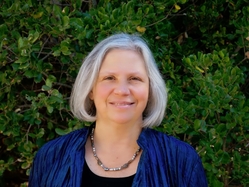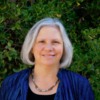Dr. Diane Suffridge, a clinical psychologist and director of the University Counseling Services at Dominican University in San Rafael, Calif., has been interested in trauma for many years. But last summer that interest took a sudden and interesting turn.
A student counselor she advised had written a research paper on the link between adverse childhood experiences (ACEs) health and mental health outcomes in foster youth, and it gave the student a new view of the patients she counseled at the university. “She was talking to me about the research paper and was making the connections with the childhood histories of some of the clients she was seeing on campus,” says Suffridge, an associate professor at the university. Suffridge asked the student to make a presentation to her peers. The student did, and now all the student counselors are educating and asking their clients about ACEs.

This wasn’t Suffridge’s first foray into trauma work. Her interest stems from her clinical practice that began in the late 1980s. “I did a lot of work with trauma survivors and have been looking at the impact of trauma on young adults for many years through a clinical perspective,” she says.
But that interest crystallized in 2011. “I read the 2011 New Yorker article about Dr. Nadine Burke Harris’work,” she says. It was her introduction to the landmark CDC-Kaiser Permanente Adverse Childhood Experiences Study (ACE Study), which linked 10 types of childhood trauma — including physical, sexual and emotional abuse; separation from a parent through divorce; living with a family member who’s an alcoholic or is mentally ill, including depression — to the adult onset of chronic disease, mental illness, violence and being a victim of violence. The study is part of ACEs science, which includes the epidemiology of ACEs (the original ACE Study and dozens of subsequent surveys), how toxic stress from ACEs affects the developing brain, the short- and long-term health consequences of toxic stress, the intergenerational transmission of ACEs (epigenetics), and the role of resilience in healing the brain and the body.
Last summer, Suffridge read Burke Harris’ book, “The Deepest Well,” which chronicles the journey and mission of pediatrician and founder of the Center for Youth Wellness to implement universal ACEs screening to prevent and mitigate trauma and build resilience. This month, Burke Harris was sworn in as California’s first Surgeon General.
“I decided that it would be really valuable clinical information for us to have – to ask the student clients as part of our initial assessment about ACEs,” she says.
Using a modified ACE survey, Suffridge and her team began asking clients about ACEs in August 2018. During the Fall semester, about 102 clients completed questions about their ACEs. The ACE questions are included in the clinic’s intake form, which also includes a narrative history and a symptom check list, in addition to having them talk about what they’re hoping to get out of counseling. (For inquiries about the adapted ACE survey and other materials, write Suffridge at: diane.suffridge@dominican.edu)
The ACE questions, explains Suffridge, have helped create an organic flow that allows the student counselors to introduce discussions about trauma and its impact and ask questions: “Whatever trauma they’ve had, what are the ways it’s impacted their current life? And we can help them manage those things in a healthier way.”
A key approach is letting the client decide how deeply they want to explore their ACEs. “So, having that information directly of how many ACEs they’ve experienced in childhood gives us a sense of how to bring up that psychoeducation and, of course, taking the client’s lead on whether they want to talk about that,” says Suffridge.
Suffridge explains that she combined the original ACE survey with the added ACEs and wording of the survey developed by Burke Harris and changed the order of the questions. “The order is somewhat different than on the original ACE survey, because it starts with the real intense sexual abuse/physical abuse. I start with the ones that are a little less jarring,” she says. By that, she means the ACE questions about parental divorce or separation. And, she explains, she’s modified the wording to sound less clinical.
And like the CYW survey, the survey does not ask clients to identify the specific ACEs they’ve experienced, but rather asks them to count up the number that applies to them and note that number at the top of the survey.
“Some clients do check off the specific ones that apply to them, but if they don’t want to they can simply put the number down,” says Suffridge.
The clients are given the intake form, which includes the ACE questions, to take home and fill out between the first and second sessions. Why? “Part of the reason was students usually want to spend the first session talking about what’s on the patient’s mind. Also, some people have an easier time acknowledging things that are difficult to talk about if they’re on their own, rather than when someone is observing them,” says Suffridge.
If the client’s ACE score is 4 or higher, explains Suffridge, they’re asked whether or not they would like to talk about their ACEs. “It’s driven by the client’s need and preference about what they want to focus on. But we’re able to provide at least an introduction to trauma, the physiological effects, and other ways that it may be related to some of the symptoms that the client is reporting.”
Suffridge and the graduate student who worked on the ACEs research developed a Q-and-A to help the 11 counselors guide the discussion about trauma with clients. It includes references to research, an explanation of responses to stress from a normal physiological response, and how someone who has experienced substantial ACEs and trauma could be triggered into fight, flight and freeze.
“It describes how people respond to stress in the present differently based on the amount of past trauma they’ve had,” explains Suffridge. A similar handout is given to clients.
Another handout shows the word “trauma” written in a circle with spokes extending outward labeled “physiological,” “anxiety,” “relationships,” “sleep”, among other words, that serve as examples of how trauma can impact one’s life. This can be used as a tool to help clients understand those connections, says Suffridge.
And clients also receive a handout that shows the physiological, psychological, cognitive and emotional responses to triggers, and a handout that describes ways to undo the grip of a trauma trigger — “so, the ways the clients can pause and the questions they can ask to slow down the immediate stress response,” she explains. And while students are not surveyed for resilience scores or strengths, a strengths-based approach is a framework of their counseling services, explains Suffridge.
Suffridge says she’s considering seeking funding for data collection and analysis of the ACEs education they’re providing, which is continuing this semester. Anecdotally, she’s received positive feedback. “The counselors have really appreciated having that starting point for a conversation and the resources to be able to talk with the clients about their trauma. It’s really just another source of information,” says Suffridge. “I think getting that information from the clients paired with the resources they get in their sessions has really been helpful.”
Suffridge intends to research examples of similar efforts with college-aged students over the coming summer. And she hopes to examine how the ACE scores they collected from clients may be instructive. “Once we finish the spring semester, we’ll look at the year as a whole in terms of the proportion of the students we’re seeing in counseling services who have ACE scores of 4 or more, and determine if there’s anything that we would want to do differently in terms of enhanced services, or in terms of outreach.”


Comments (0)